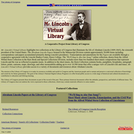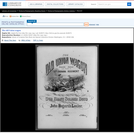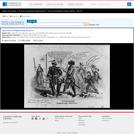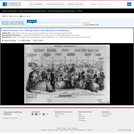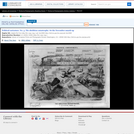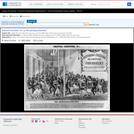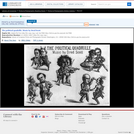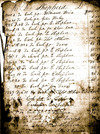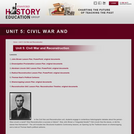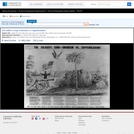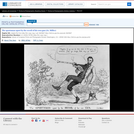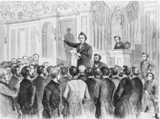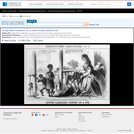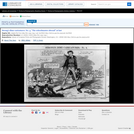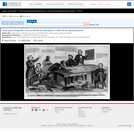
The contest for the presidency in 1864 is depicted as a game of bagatelle (a game similar to pool) between Republican candidate Abraham Lincoln and Democrat George B. McClellan. Lincoln (left) holds a cue "Baltimore" (the site of the Republican national convention) and is about to shoot a ball on "The Union Board." He says to running mate Andrew Johnson (upper right), "I'll do the best I can Andy, I can do no more." Johnson encourages him, "Hurrah for our side, go ahead Old Abe! O aint he bully on the bagatelle? you're only got a few more to make, It's A Sure Thing!!" Johnson points to the scoreboard which reads "Nix" for the "Copper" (i.e., Copperheads or Peace Democrats). The Union side of the board is blank. At left McClellan, dressed as a child, holds a cue "Chicago" (site of the Democratic national convention) and stands on a toppling "Chicago Platform," which appears to have been given a nudge by Lincoln's foot. A "Peace" plank has fallen from it. (McClellan was never entirely committed to the "peace at any price" principle advocated by Copperhead leader Clement L. Vallandigham.) McClellan complains, "This Cue 'is too heavy! and the' Platform's 'shakey!! O! O! I want to go back in the yard!!" His running mate George H. Pendleton (far left) retorts impatiently, "O see here. We cant stand this! Old Abe's getting in all the pots on the board, this game will have to be played over again or there'l be a fight, THAT'S CERTAIN." At the far right Vallandigham sits with crossed legs, saying to McClellan, "There is nothing the matter with the Cue or the Platform, you had the first red and didn't make anything, now he'll win the game." Union general Ulysses S. Grant smokes a pipe and stands near the middle of the table. He advises McClellan, " . . . you travel too near the ground to play on this board, better surrender UNCONDITIONALLY." A grinning black waiter with a tray of drinks watches Pendleton and McClellan. In the foreground are a cat named "Miss Cegenation" (i.e., miscegenation) and a black dog, tied together at the tails by a string attached to a kettle. They chase two rats, "Old Lea" and "Wood," across a paper holding "Caces Sugar Plumbs."|Published by J.L. Magee, South East cor. Third & Dock Sts. Philada.|Signed: J.L.M. (John L. Magee).|Title appears as it is written on the item.|Weitenkampf, p. 145-146.|Wilson, p. 272-273.|Forms part of: American cartoon print filing series (Library of Congress)|Published in: American political prints, 1766-1876 / Bernard F. Reilly. Boston : G.K. Hall, 1991, entry 1864-16.
- Subject:
- History
- U.S. History
- Material Type:
- Diagram/Illustration
- Primary Source
- Provider:
- Library of Congress
- Provider Set:
- Library of Congress - Cartoons 1766-1876
- Date Added:
- 06/13/2013

